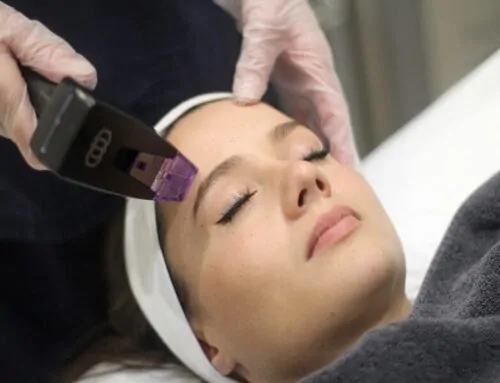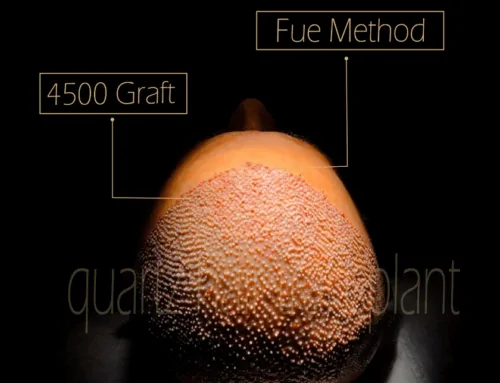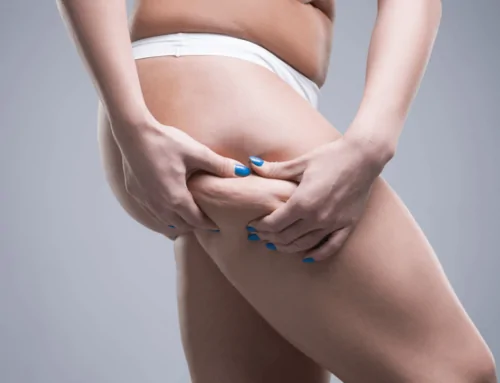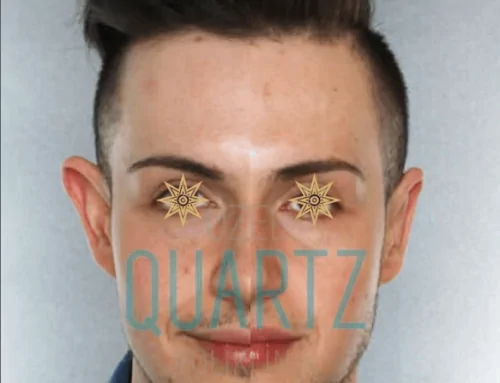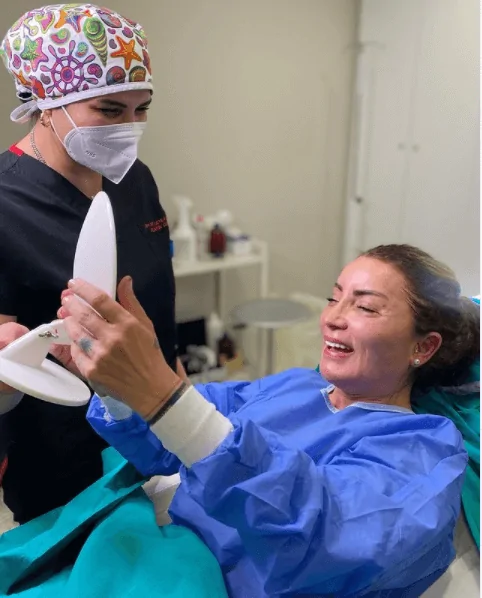 Under eye fillers, also known as tear trough fillers, are injectable treatments that are used to add volume to the area under the eyes. This area can become hollow or sunken over time due to aging, genetics, or other factors, and can contribute to a tired or aged appearance.
Under eye fillers, also known as tear trough fillers, are injectable treatments that are used to add volume to the area under the eyes. This area can become hollow or sunken over time due to aging, genetics, or other factors, and can contribute to a tired or aged appearance.
Under eye fillers are typically made of hyaluronic acid, a substance that is naturally present in the skin and helps to keep it hydrated and plump. The treatment is typically performed by a trained medical professional, such as a dermatologist or plastic surgeon, using a fine needle to inject the filler into the skin.
The procedure takes about 30 minutes to an hour to complete, and the results are usually immediate. Some swelling and bruising may occur after the treatment, but these side effects usually resolve within a few days. The results of under eye fillers can last for several months, and touch-up treatments may be needed to maintain the desired results.
It’s important to consult with a qualified medical professional before undergoing any injectable treatment, as the safety and effectiveness of the treatment can vary depending on the specific product and the individual patient.
Is Tear Trough Filler Same as Under Eye Filler?
Tear trough filler and under eye filler refer to the same thing: injectable filler used to add volume to the area under the eyes, also known as the tear trough. This area can become hollow or sunken with age, or as a result of genetics, and the use of filler can help to smooth out the appearance of these hollows and reduce the appearance of under eye bags and dark circles. There are a variety of fillers that can be used for this purpose, including hyaluronic acid fillers such as Restylane and Juvéderm. The type of filler used, as well as the technique and amount of filler used, will depend on the specific concerns and goals of the individual patient. It is important to consult with a qualified and experienced medical provider for more information and to determine the best treatment plan for you.
What Can I do Instead of Tear Trough Filler?
There are a number of non-invasive options that can be used to address the appearance of hollows or sunken areas under the eyes, also known as the tear trough. Some of these options include:
- Skin care products: Certain skin care products, such as those containing retinoids or alpha hydroxy acids, can help to improve the texture and tone of the skin, which can in turn help to reduce the appearance of dark circles and hollows.
- Topical treatments: There are a variety of topical treatments that can be used to address under eye concerns, including creams and serums containing ingredients like caffeine, vitamin K, and niacinamide. These ingredients can help to improve the circulation, reduce inflammation, and reduce the appearance of dark circles.
- Non-surgical treatments: non-surgical treatments such as radiofrequency, ultrasound, and laser treatments can help to stimulate collagen production, tighten the skin, and improve the overall appearance of the under-eye area.
- Makeup: Concealer and other makeup products can be used to cover up dark circles and other imperfections, giving the appearance of a smoother, more refreshed under eye area.
It is important to note that the best course of treatment will depend on the specific concerns and goals of the individual patient. It is always recommended to consult with a qualified and experienced medical provider for personalized recommendations and to determine the most appropriate treatment plan for you.
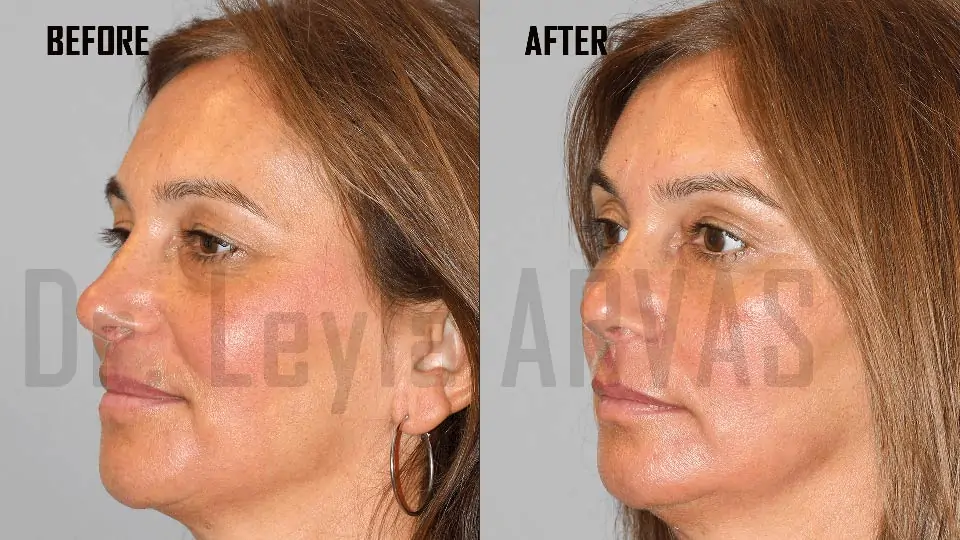 Are Fillers Good for Under Eye?
Are Fillers Good for Under Eye?
Fillers can be a good option for addressing certain concerns in the under-eye area, such as hollows or sunken areas, dark circles, and fine lines and wrinkles. Fillers are injectable substances that are used to add volume to the skin and smooth out the appearance of wrinkles and other imperfections. There are a variety of fillers that can be used in the under-eye area, including hyaluronic acid fillers such as Restylane and Juvéderm.
It is important to note that the use of fillers is a medical procedure that should be performed by a qualified and experienced medical provider. There are potential risks and side effects associated with any medical procedure, including the use of fillers, and it is important to thoroughly discuss these with your provider before proceeding with treatment.
It is also important to have realistic expectations about the results of filler treatment. Fillers can help to improve the appearance of the under-eye area, but they are not a permanent solution and will eventually be absorbed by the body. Maintenance treatments may be necessary to maintain the desired results.
How Long Does Under Eye Filler Last?
The length of time that under eye filler will last will depend on a number of factors, including the specific type of filler used, the technique and amount of filler used, and the individual patient’s metabolism and lifestyle.
In general, hyaluronic acid fillers such as Restylane and Juvederm, which are commonly used in the under-eye area, can last for 6 to 12 months. Some patients may find that the effects of their filler last longer, while others may find that they need touch-up treatments more frequently.
It is important to note that filler treatment is not a permanent solution, and maintenance treatments will be necessary to maintain the desired results. It is also important to follow the aftercare instructions provided by your medical provider and to avoid activities that may cause the filler to be absorbed more quickly, such as excessive sun exposure or vigorous exercise.
If you are considering under eye filler treatment, it is important to consult with a qualified and experienced medical provider for personalized recommendations and to determine the most appropriate treatment plan for you.
Does Tear Trough Filler Remove Under Eye Wrinkles?
Tear trough filler, also known as under eye filler, is primarily used to add volume to the area under the eyes and smooth out the appearance of hollows or sunken areas. It is not specifically designed to remove wrinkles in this area.
That being said, the use of filler in the under-eye area can sometimes have a softening effect on fine lines and wrinkles, as the added volume can help to plump up the skin and smooth out the overall appearance of the area. However, the primary goal of under eye filler treatment is to add volume, rather than to remove wrinkles.
If you are interested in addressing fine lines and wrinkles in the under-eye area, there are a number of other treatment options that may be more effective. These options include non-surgical treatments such as radiofrequency, ultrasound, and laser treatments, as well as certain skin care products and topical treatments. It is important to consult with a qualified and experienced medical provider for personalized recommendations and to determine the most appropriate treatment plan for you.
What Can I do Instead of Tear Trough Filler?
There are a number of non-invasive options that can be used to address the appearance of hollows or sunken areas under the eyes, also known as the tear trough. Some of these options include:
- Skin care products: Certain skin care products, such as those containing retinoids or alpha hydroxy acids, can help to improve the texture and tone of the skin, which can in turn help to reduce the appearance of dark circles and hollows.
- Topical treatments: There are a variety of topical treatments that can be used to address under eye concerns, including creams and serums containing ingredients like caffeine, vitamin K, and niacinamide. These ingredients can help to improve the circulation, reduce inflammation, and reduce the appearance of dark circles.
- Non-surgical treatments: non-surgical treatments such as radiofrequency, ultrasound, and laser treatments can help to stimulate collagen production, tighten the skin, and improve the overall appearance of the under-eye area.
- Makeup: Concealer and other makeup products can be used to cover up dark circles and other imperfections, giving the appearance of a smoother, more refreshed under eye area.
It is important to note that the best course of treatment will depend on the specific concerns and goals of the individual patient.
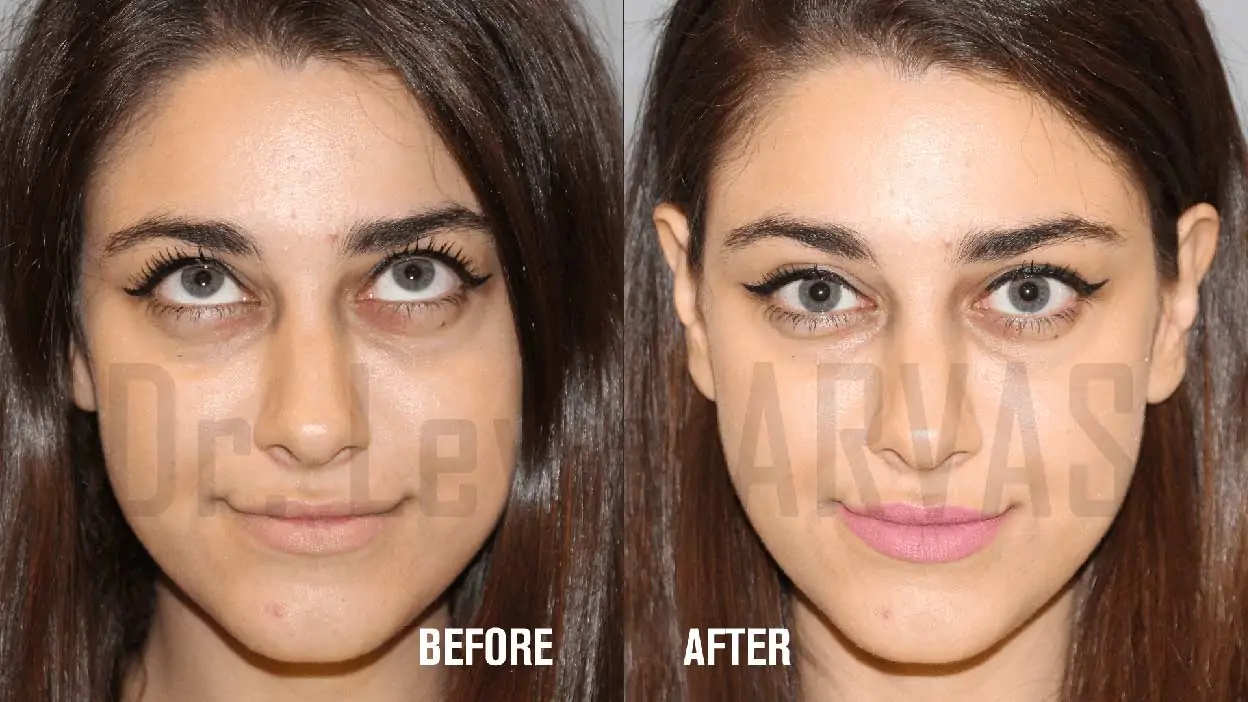 What Happens When Tear Trough Filler Wears Off?
What Happens When Tear Trough Filler Wears Off?
When tear trough filler wears off, the area under the eyes will gradually return to its original appearance. This process can take several months, depending on the type of filler used and the individual’s metabolism. Some people may notice that their under-eye hollows and dark circles become more noticeable as the filler wears off, while others may not notice much of a difference.
It is important to note that tear trough filler is not a permanent treatment. In order to maintain the
Are Tear Trough Fillers Permanent?
Tear trough fillers are not permanent. They are a type of injectable treatment that is used to add volume to the area under the eyes, also known as the tear troughs. This treatment is designed to smooth out the appearance of under-eye hollows and dark circles, resulting in a more refreshed and youthful appearance.
The effects of tear trough filler typically last for several months, depending on the type of filler used and the individual’s metabolism. Some people may find that the effects last longer, while others may notice that the filler wears off more quickly. In general, the results of tear trough filler are temporary and will need to be repeated every few months or so to maintain the desired appearance.
How Often do You Have to Redo Under Eye Filler?
The frequency with which you will need to redo under eye filler depends on several factors, including the type of filler used and your individual metabolism. Some types of fillers are designed to last longer than others, and some people may find that the effects of the filler last longer than others.
In general, the results of under eye filler can last for several months, although this can vary widely from person to person. Some people may find that they need to redo the treatment every few months to maintain the desired results, while others may be able to go longer between treatments.
Does Tear Trough Filler Change Your Face?
Tear trough filler treatment is designed to smooth out the appearance of under-eye hollows and dark circles, resulting in a more refreshed and youthful appearance.
While tear trough filler can help to improve the appearance of the area under the eyes, it is not designed to significantly change the overall shape or structure of the face. The treatment is typically subtle and is meant to enhance rather than alter the natural contours of the face.
What are the Cons of Under Eye Fillers?
There are several potential drawbacks to under eye fillers that you should be aware of before deciding to have the treatment. These include:
- Cost: Under eye fillers can be expensive, and the cost of the treatment can vary widely depending on the type of filler used, the amount of filler needed, and the location of the provider.
- Side effects: Like any medical procedure, under eye fillers carry a risk of side effects. These can include swelling, bruising, and redness around the injection site. In some cases, the filler may cause lumps or bumps to form under the skin.
- Allergic reactions: Some people may have an allergic reaction to the filler material, which can cause symptoms such as redness, itching, and swelling.
- Risk of infection: There is a small risk of infection associated with under eye fillers, although this can be minimized by choosing a qualified healthcare provider and following aftercare instructions carefully.
- Non-permanent results: Under eye fillers are not a permanent treatment, and the effects will typically last for several months before fading. This means that you will need to repeat the treatment every few months to maintain the desired results.
It is important to carefully weigh the pros and cons of under eye fillers before deciding to have the treatment. If you are considering under eye fillers, it is important to discuss your goals and expectations with a qualified healthcare provider, who can help you determine the best treatment plan for you.
Is Under Eye Filler Painful?
Under eye filler is typically not a painful procedure. Most people describe the injection process as feeling like a mild pinch or a bee sting. Your healthcare provider may use a numbing cream or ice to help reduce any discomfort.
After the treatment, you may experience some swelling, bruising, or redness around the injection site, which should resolve within a few days. Some people may also experience slight tenderness or sensitivity in the area.
If you are concerned about pain during the treatment, you can discuss your concerns with your healthcare provider. They may be able to provide additional numbing or pain relief measures to help make the procedure more comfortable for you.
It is important to keep in mind that under eye filler is a medical procedure that should be performed by a qualified healthcare provider.
Do Fillers Work for Under Eye Bags?
Under eye filler is designed to smooth out the appearance of under-eye hollows and dark circles, resulting in a more refreshed and youthful appearance.
In some cases, under eye fillers may be effective in reducing the appearance of under eye bags or puffiness. However, the effectiveness of the treatment can vary widely from person to person, and it may not be appropriate for everyone.
If you are considering under eye fillers to address under eye bags or puffiness, it is important to discuss your goals and expectations with a qualified healthcare provider. They can help you determine the best treatment plan for you and explain whether under eye fillers are likely to be effective in your case.
It is also important to keep in mind that under eye fillers are a temporary treatment that will need to be repeated every few months or so to maintain the desired results. If you are looking for a more permanent solution for under eye bags or puffiness, you may want to consider other treatment options, such as blepharoplasty (eyelid surgery).
What Age Should You Get Under Eye Filler?
There is no specific age at which it is recommended to get under eye filler. The decision to have the treatment is typically based on individual goals and concerns.
Under eye filler is typically used to smooth out the appearance of under-eye hollows and dark circles, resulting in a more refreshed and youthful appearance. If you are considering under eye filler, it is important to discuss your goals and expectations with a qualified healthcare provider. They can help you determine the best treatment plan for you and explain whether under eye filler is likely to be effective in your case.
Does Under Eye Filler Look Natural?
The naturalness of under eye filler depends on several factors, including the type of filler used, the amount of filler injected, and the skill of the healthcare provider performing the treatment.
However, if too much filler is used, or if the filler is not properly placed, the results may look unnatural or “overdone.” It is important to discuss your goals and expectations with a qualified healthcare provider before having under eye filler, and to choose a provider who has experience and training in this type of treatment.
Is it Normal to Swell After Under Eye Filler?
Swelling is a common side effect of under eye filler. The amount of swelling that occurs can vary widely from person to person, and may depend on the type of filler used, the amount of filler injected, and the individual’s metabolism.
In general, swelling after under eye filler is not a cause for concern and should resolve within a few days. You may notice that the area around the injection site feels swollen or puffy, or that there is some mild tenderness or sensitivity in the area.
If you experience significant or persistent swelling after under eye filler, or if you experience any other unusual symptoms, you should contact your healthcare provider for further evaluation.
My Under Eye is Saggy and Purple, What Should I Do?
If you are concerned about sagging or purple skin under your eyes, it is important to consult a qualified healthcare provider for an evaluation and recommendations for treatment. There are several potential causes for sagging or purple skin under the eyes, and a healthcare provider will be able to determine the most appropriate course of action based on your individual circumstances.
One potential cause of sagging skin under the eyes is volume loss, which can occur as part of the natural aging process. In these cases, treatment options may include injectable fillers or skin tightening procedures to restore volume and smooth out the appearance of sagging skin.
If the purple coloration under your eyes is due to dark circles, treatment options may include topical creams or serums that contain ingredients designed to lighten the skin, or injectable treatments to reduce the appearance of dark circles.
It is important to note that sagging or purple skin under the eyes can also be caused by other factors, such as genetics, sun exposure, and lifestyle habits. A healthcare provider will be able to determine the most appropriate treatment plan based on the specific cause of the sagging or purple skin.
My Under Eye is Saggy and Purple, What Should I Do?
One potential cause of sagging skin under the eyes is volume loss, which can occur as part of the natural aging process. In these cases, treatment options may include injectable fillers or skin tightening procedures to restore volume and smooth out the appearance of sagging skin.
If the purple coloration under your eyes is due to dark circles, treatment options may include topical creams or serums that contain ingredients designed to lighten the skin, or injectable treatments to reduce the appearance of dark circles.
How do I Get Rid of Purple Sunken Under My Eyes?
There are several treatment options that may be effective for reducing the appearance of purple sunken skin under the eyes. The most appropriate treatment will depend on the specific cause of the sunken or purple appearance. Some potential treatment options include:
- Injectable fillers: Injectable fillers, such as hyaluronic acid or calcium hydroxylapatite, can be used to add volume to the area under the eyes, smoothing out the appearance of sunken or hollowed skin.
- Skin lightening agents: Topical creams or serums that contain ingredients such as kojic acid, arbutin, or vitamin C may be effective for lightening the skin under the eyes, reducing the appearance of purple or dark circles.
- Laser or light-based treatments: Laser or light-based treatments, such as fractional laser resurfacing or intense pulsed light (IPL) therapy, may be effective for improving the tone and texture of the skin under the eyes.
- Blepharoplasty (eyelid surgery): In some cases, sunken or sagging skin under the eyes may be caused by excess skin or fat in the eyelids. In these cases, blepharoplasty (eyelid surgery) may be an effective treatment option.
Can Under Eye Filler Cause Allergies?
Under eye filler is a medical procedure that involves injecting a filler material into the area under the eyes. Like any medical procedure, there is a risk of allergic reactions to the filler material.
Allergic reactions to under eye filler can range from mild to severe and may include symptoms such as redness, itching, swelling, and hives. In rare cases, an allergic reaction to under eye filler can be life-threatening.
If you have a history of allergies or have experienced allergic reactions to other medications or substances in the past, it is important to inform your healthcare provider before having under eye filler. They will be able to evaluate your allergy history and determine the most appropriate treatment plan for you.
It is also important to be aware of the potential risks and drawbacks of under eye filler, and to carefully weigh the pros and cons before making a decision to have the treatment. If you are considering under eye filler, it is important to discuss your goals and expectations with a qualified healthcare provider, who can help you determine the best treatment plan for you.
Under Eye Fillers or Fat Injection?
Under eye fillers and fat injections are two different treatment options that can be used to add volume to the area under the eyes and smooth out the appearance of under-eye hollows or dark circles. Both treatments can be effective in improving the appearance of the under-eye area, but they differ in several key ways.
Under eye fillers are injectable treatments that use synthetic materials, such as hyaluronic acid or calcium hydroxylapatite, to add volume to the under-eye area. The effects of under eye fillers are typically temporary, lasting for several months before fading.
Fat injections, also known as fat grafting, involve harvesting fat from another area of the body (such as the thighs or abdomen) and injecting it into the under-eye area. The effects of fat injections are generally more long-lasting than under eye fillers, but the procedure is more invasive and may have a longer recovery time.
The most appropriate treatment for you will depend on your individual goals and concerns, as well as your overall health and medical history.
How Can I Make My Eyes Look Younger Without Surgery?
There are several non-surgical treatment options that can be used to improve the appearance of the eyes and make them look younger. Some of these options include:
- Topical treatments: Topical treatments, such as creams or serums that contain ingredients like retinol, vitamin C, and peptides, may help to improve the tone and texture of the skin around the eyes, reducing the appearance of fine lines and wrinkles.
- Injectable treatments: Injectable treatments, such as Botox or fillers, can be used to smooth out wrinkles and add volume to the area under the eyes, resulting in a more refreshed and youthful appearance.
- Laser or light-based treatments: Laser or light-based treatments, such as fractional laser resurfacing or intense pulsed light (IPL) therapy, may be effective for improving the tone and texture of the skin around the eyes.
- Eyelash extensions: Eyelash extensions can add length and fullness to the lashes, resulting in a more youthful and defined eye area.
- Makeup techniques: Certain makeup techniques, such as applying highlighter to the inner corners of the eyes or using a light-colored eye shadow to brighten the eye area, can help to make the eyes look more youthful.
How Long Dermal Fillers Last?
The duration of dermal fillers can vary widely depending on the specific type of filler used, the location of the injection, and the individual’s metabolism. In general, dermal fillers are a temporary treatment that will need to be repeated every few months to maintain the desired results.
Some types of dermal fillers, such as hyaluronic acid fillers, may last for six months to a year before fading. Other types, such as calcium hydroxylapatite fillers, may last for up to two years.
It is important to keep in mind that the duration of dermal fillers can vary widely from person to person. Some people may need to have the treatment repeated more frequently to maintain the desired results, while others may find that the effects last longer.
If you are considering dermal fillers, it is important to discuss your goals and expectations with a qualified healthcare provider. They can help you determine the best treatment plan for you and explain what you can expect from the treatment. It is also important to follow the aftercare instructions provided by your healthcare provider to maximize the duration of the treatment.
What is Cost of Undereye Filler?
The cost of under eye fillers can vary widely depending on a number of factors, including the type of filler used, the amount of filler needed, the location of the treatment, and the experience and training of the provider.
In general, the cost of under eye fillers ranges from $500 to $1,500 per treatment. However, some providers may charge more or less than this amount, and the cost may also vary depending on the specific product used.
It’s important to keep in mind that the cost of under eye fillers is typically not covered by insurance, as it is considered a cosmetic procedure. If you are considering under eye fillers, it’s a good idea to shop around and compare prices from different providers before making a decision. It’s also important to choose a qualified and experienced provider to ensure the safety and effectiveness of the treatment.

